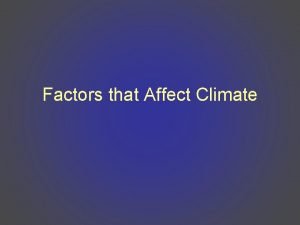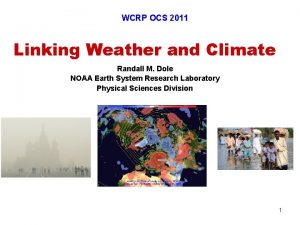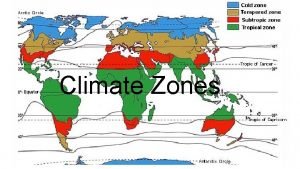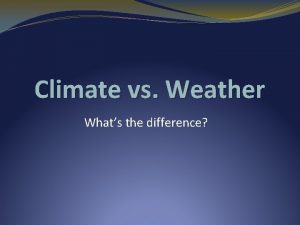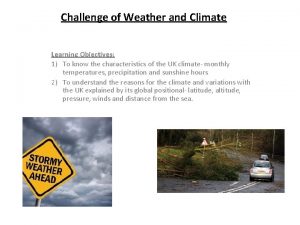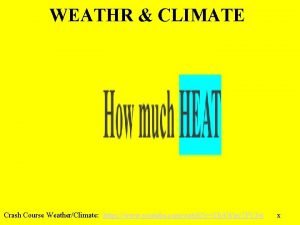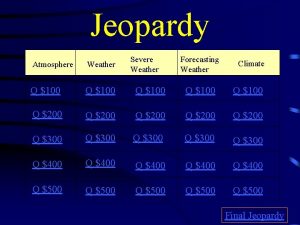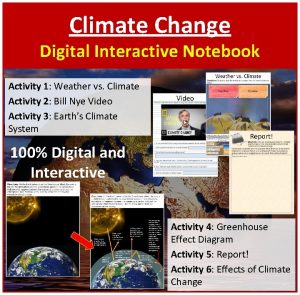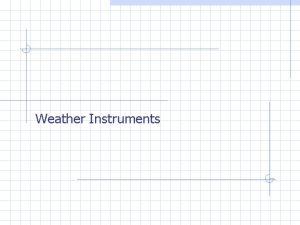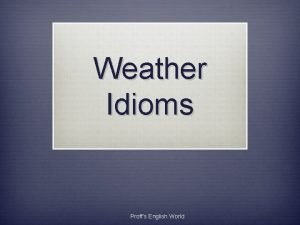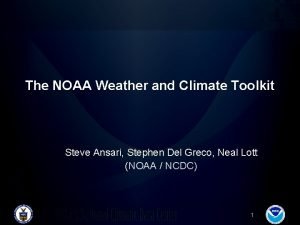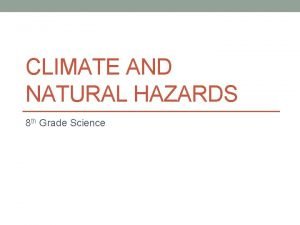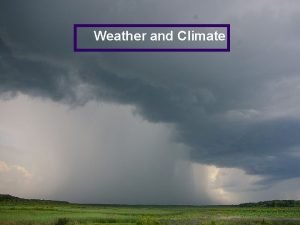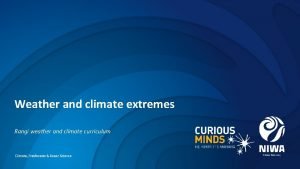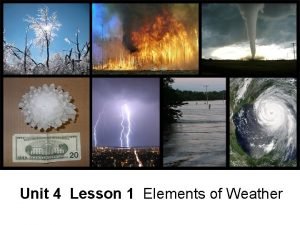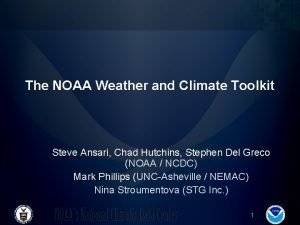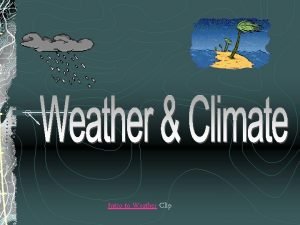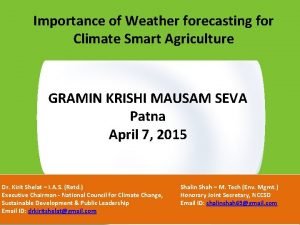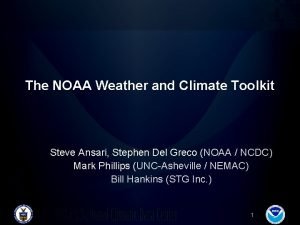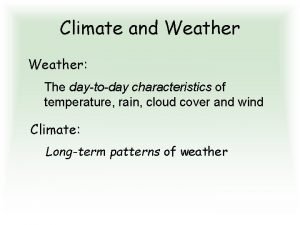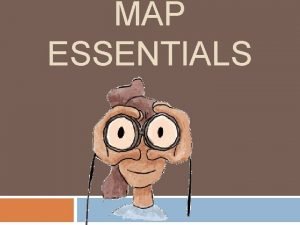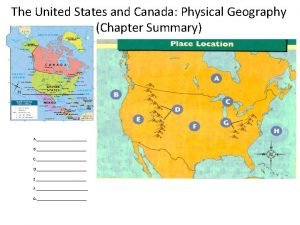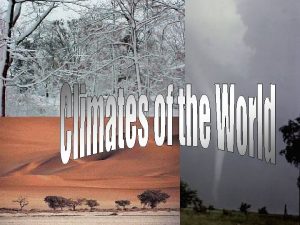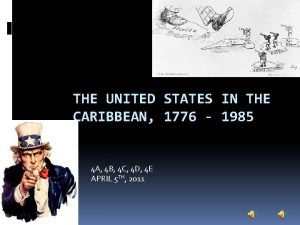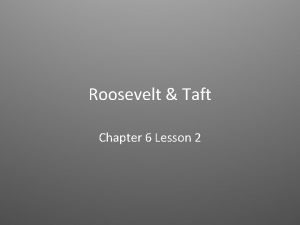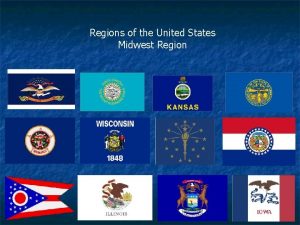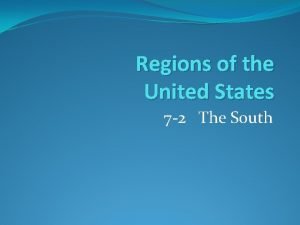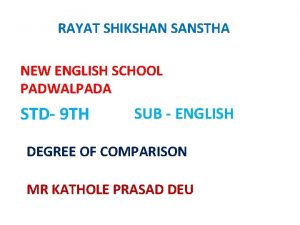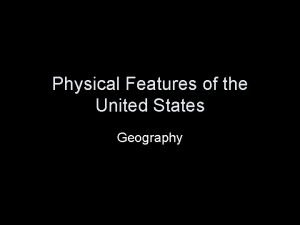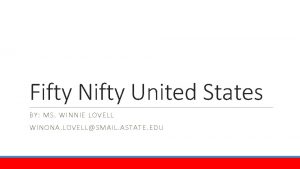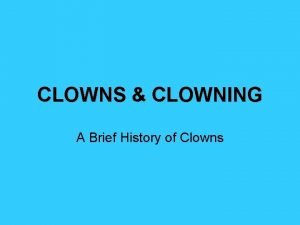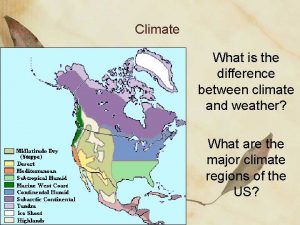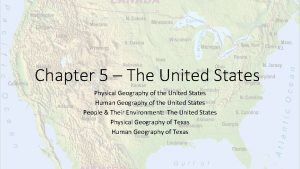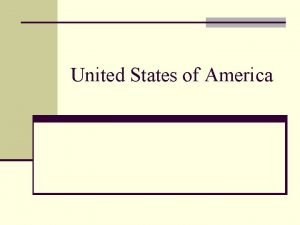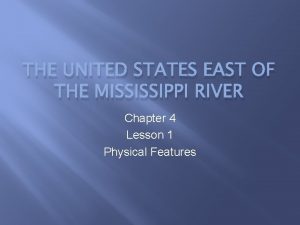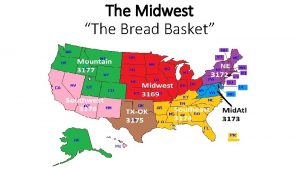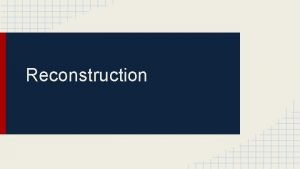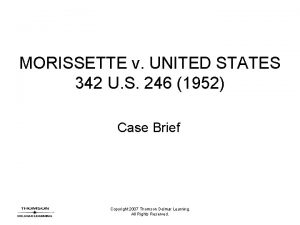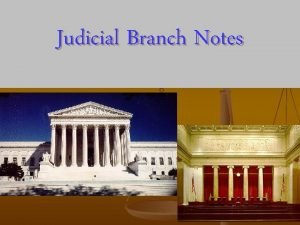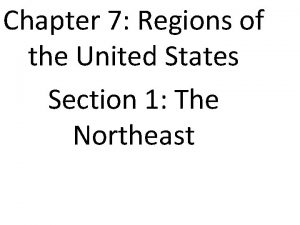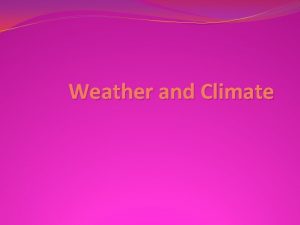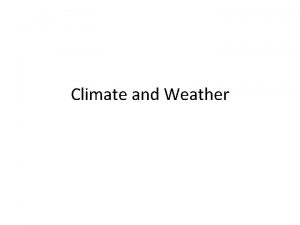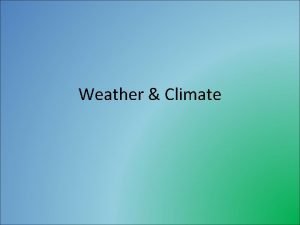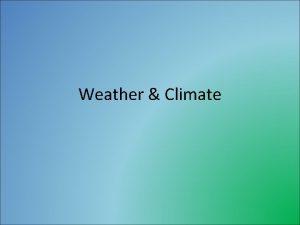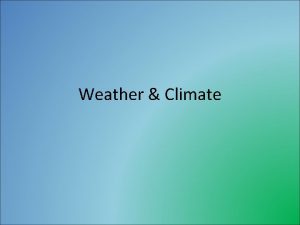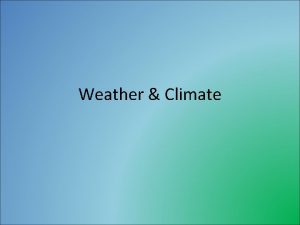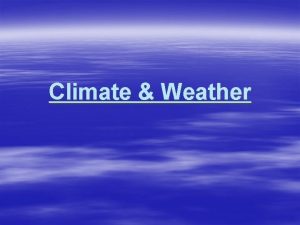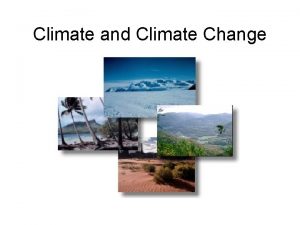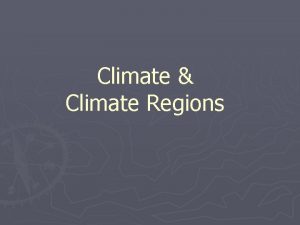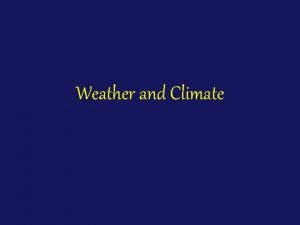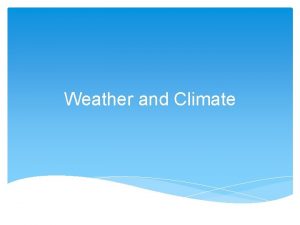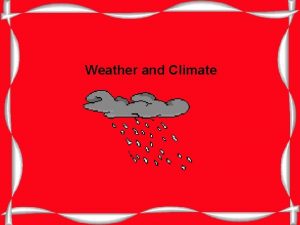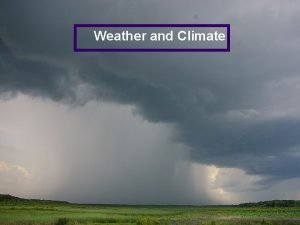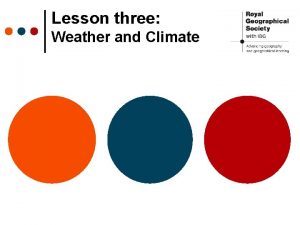United States Department of Agricultures Weather And Climate














































































- Slides: 78

United States Department of Agriculture’s Weather And Climate Information System for Operational Applications in Agriculture by Ray Motha and Robert Stefanski

Overview of Presentation • Description of JAWF • Examples of Applications – Routine and Special Assessments – Weekly Weather and Crop Bulletin – Supply and Demand Estimates – Drought Monitor – Mississippi State Weather Network • Conclusions World Agricultural Outlook Board

Background Information • The World Agricultural Outlook Board has the operational responsibility for monitoring and analyzing the impact of global weather on agriculture. • This activity is conducted at the Joint Agricultural Weather Facility (JAWF). • The JAWF is a cooperative effort between the U. S. Department of Agriculture and the National Weather Service (NWS) of the U. S. Department of Commerce. World Agricultural Outlook Board

USDA Situation and Outlook Organizational Structure Secretary/Deputy Secretary Chief Economist WAOB Chairperson Chief Meteorologist/ Joint Agricultural Weather Facility Interagency Agricultural Projections Coordinator Interagency Commodity Estimates Committees Chaired by WAOB Senior Analysts Grains Livestock Fibers Oilseeds World Agricultural Outlook Board Specialty Crops

JAWF’s Primary Mission To routinely collect global weather data and agricultural information to determine the impact of growing season weather conditions on crops and livestock production prospects. World Agricultural Outlook Board

JAWF’s Main Responsibilities • Directly advise the Office of the Chief Economist and the Secretary of Agriculture on weather related agricultural developments. • Publish the Weekly Weather and Crop Bulletin. • To routinely provide crop-weather assessments for monthly World Agricultural Supply and Demand Estimates (WASDE) lockup report. • Disseminate global weather data to other agencies within USDA. World Agricultural Outlook Board

U. S. Dept. of Commerce U. S. Dept. of Agriculture NOAA WAOB National Oceanic & Atmospheric Administration World Agricultural Outlook Board National Weather Service (NWS) Climate Prediction Center International Crop Information NASS National Agricultural Statistics Service Domestic Crop Statistics Global Weather Data JOINT AGRICULTURAL WEATHER FACILITY Web site http: //www. usda. gov/oce/waob/jawf World Agricultural Outlook Board

DAILY GLOBAL SURFACE WEATHER DATA 8000 Worldwide Weather Stations World Meteorological Organization Global Weather Telecommunications System US National Weather Service Washington, D. C. World Agricultural Outlook Board

US National Weather Service Washington, D. C. • River Forecast Stations • Snotel (USDA/NRCS) • Cooperative Network • Global Hourly Data (NOAAPORT) Additional Data Sources • US SCAN Data • Mexico • South Africa • Australia (SILO) JOINT AGRICULTURAL WEATHER FACILITY JAWF maintains an operational archive of historical daily data for rapid retrieval World Agricultural Outlook Board

Users of JAWF’s Information • • Government decision makers (National & State) Ag Analysts (Gov’t and private) Extension agents Farmers Farming Community (Markets) Media (Newspaper, Radio) General Public World Agricultural Outlook Board

Scope of Products • Tactical Ag Weather Products (Short-term) – Weekly Weather and Crop Bulletin (WWCB) – JAWF in Stoneville, Mississippi (Weather Data) – Routine & Special Assessments • Strategic Ag Weather Products (Long-term) – Drought Monitor – Supply/Demand Estimates – National and International Monitoring (WWCB) World Agricultural Outlook Board

Routine and Special Assessments World Agricultural Outlook Board Joint Agricultural Weather Facility

Routine Operational Assessments • Morning US Weather Update • Daily Highlights of Agricultural Developments • USDA Secretary Briefing (Weekly) – Highlight Relevant Weather Impacts for USDA Secretary & Top Staff • Global Weather Briefing for USDA Analysts (weekly) • Media (TV, Radio, Print) & Public Contacts World Agricultural Outlook Board

JAWF Products • Data Plots (many time periods) • Time series accumulations – Daily & weekly – Rainfall, temperature, growing degree days • Weekly & monthly contour analyses • Rankings • Analog seasons World Agricultural Outlook Board

JAWF Products • Derived Parameters – Phenology – Moisture parameters (Palmer Drought Index, Soil Moisture Models) • Crop assessments • El Nino/La Nina Impacts World Agricultural Outlook Board

ARGENTINA – CENTRAL AND SOUTHERN CORDOBA Cumulative Precipitation (mm) 70 60 Day Summary: 60 August 9 – October 7 2003: Deficit of 56 mm (13% of normal) 2002: Deficit of 25 mm (61% of normal) 50 Normal 40 2002 30 20 Still too dry; crops heading to grain fill 10 2003 Au g Au -9 g. Au 11 g 1 Au 3 g. Au 15 g 1 Au 7 g 1 Au 9 g. Au 21 g 2 Au 3 g. Au 25 g 2 Au 7 g 2 Au 9 g 3 Se 1 p 2 Se p. Se 4 p 6 Se p Se -8 p. Se 10 p 1 Se 2 p. Se 14 p 1 Se 6 p 1 Se 8 p. Se 20 p 2 Se 2 p. Se 24 p 2 Se 6 p 2 Se 8 p 30 O ct -2 O ct -4 O ct -6 0 Date Normal World Agricultural Outlook Board Joint Agricultural Weather Facility 2003 2002

ARGENTINA – CENTRAL AND SOUTHERN CORDOBA Daily Temperature Values (C) 40 August 9 – October 7, 2003 35 Unseasonably warm 30 25 20 15 10 5 0 Au g Au -9 g. Au 11 g 1 Au 3 g. Au 15 g 1 Au 7 g 1 Au 9 g. Au 21 g 2 Au 3 g. Au 25 g 2 Au 7 g 2 Au 9 g 3 Se 1 p 2 Se p. Se 4 p 6 Se p Se -8 p. Se 10 p 1 Se 2 p. Se 14 p 1 Se 6 p 1 Se 8 p. Se 20 p 2 Se 2 p. Se 24 p 2 Se 6 p 2 Se 8 p 30 O ct -2 O ct -4 O ct -6 -5 Date (2003) Max World Agricultural Outlook Board Joint Agricultural Weather Facility Min Tnorm

2003 - Driest in the past 25 years

WAOB GIS Specifications • Hardware – Pentium IV desktop computers • Processing speed 1. 8 GHz • 512 MB RAM • Windows 2000 operating system – Oracle database • Software – Arc. View 3. 2 – Spatial Analyst 2. 0 extension – Arc. GIS 9. x software World Agricultural Outlook Board

Data • Operational Weather – domestic: synoptic, cooperative observer – international: World Meteorological Org. • Special Weather – tropical cyclone – mesonetwork (e. g. , FAWN, SNOTEL) • Agricultural – historical crop production – observed crop progress and condition – historical livestock inventory World Agricultural Outlook Board

1. Daily Plot Maps - display raw WMO data - “quick look” analyses - automated using Avenue - maps exported as JPEGs

2. Shaded Contour Maps - color contour WMO data - enhanced version of Daily Plot Avenue script - maps exported as WMF

3. Crop Area Maps - NASS county-level data - delineate major crop areas - production data normalized and ranked - crop shapefiles created - maps exported as JPEGs

4. Crop Progress/Condition Maps - weekly NASS data obtained from web - identify wx-sensitive growth stages - VBA application formats data - data imported/displayed in Arc. View - PDFs generated





Weekly Weather and Crop Bulletin World Agricultural Outlook Board Joint Agricultural Weather Facility










Credit for each product



http: //www. usda. gov/agency/oce/waob/jawf/


World Agricultural Supply & Demand Estimates (Lockup) World Agricultural Outlook Board Joint Agricultural Weather Facility


Supply / Demand Equation Beginning Stocks + Imports + Production Domestic Use + Exports + Supply Demand Ending Stocks Change in one component affects others Supply / Demand Estimates for Grains - Soybeans - Cotton - Livestock - Sugar Estimates Revised Monthly

Goals of USDA’s Outlook Information System • Objectivity – Provide unbiased information • Reliability – Based on sound data and analysis • Timeliness – Fast flow to users

Attaché Reports Official Country Reports U. S. and World Weather USDA’s Economic Intelligence System Travel Reports Economic and Trend Analysis Remote Sensing

USDA’s Economic Intelligence System National Agricultural Statistics Service Joint Agricultural Weather Facility Weekly Weather and Crop Bulletin Foreign Agricultural Service Economic Research Service World Agricultural Outlook Board Farm Service Agency Long-term Baseline Projections Domestic Production and Stocks Estimates FAS Commodity Circulars World Agricultural Supply and Demand Estimates World Agricultural Outlook Board ERS Situation and Outlook Reports


Assessing El Niño / La Niña Crop Weather Impacts Care must be taken to avoid generalizations during ENSO events. World Agricultural Outlook Board

Assessing El Niño / La Niña Crop Weather Impacts Moderate to strong: El Niño La Niña Impacts are rarely the same between events. World Agricultural Outlook Board

Drought Monitor World Agricultural Outlook Board Joint Agricultural Weather Facility

U. S. Drought Monitor • A Blend of Science and Subjectivity – Climate indices – Numerical models – Input from regional and local experts • Published Weekly • Nine Authors – NDMC, USDA, CPC, NCDC – 2 -3 week shifts as the product lead author • Droughts are generally slow to emerge and recede – Classifications usually change one level per week

The Drought Monitor is a state-of-the art blend of science and subjectivity !



Operations of the Joint Agricultural Weather and Data Center MSU/DREC USDA/ARS USDA/OCE/WAOB and MSU/DREC in Stoneville, Mississippi World Agricultural Outlook Board

Location Mississippi Delta counties (20) shaded in blue.

Background • Established in 1998 to fill gaps in the national weather data collection system, making specialized agricultural weather data available to research and production agriculture. • DREC-Weather/GIS section serves the local needs of the Mississippi delta. • WAOB’s Agricultural Weather Data Center has a regional focus, partnering with other institutions engaged in ag-weather activities. World Agricultural Outlook Board

Partnerships • JAWF • USDA’s Natural Resources Conservation Service (NRCS) • Mississippi State University • University of Missouri • Alabama A&M University • Iowa State University- Ag Climate Network • Oklahoma Mesonet • National Weather Service - COOP Modernization • Regional Climate Centers World Agricultural Outlook Board

Network Locations World Agricultural Outlook Board

Delta Weather Network • Parameters Measured (vary by type of site) – – – – – Air Temperature Precipitation Relative Humidity Wind Speed and Direction Solar Radiation Evaporation Barometric Pressure Soil Temperature at 2”, 4”, 8”, 20”, and 40” Soil Moisture at 2”, 4”, 8”, 20”, and 40” World Agricultural Outlook Board

SCAN NETWORK Soil Climate Analysis Network World Agricultural Outlook Board

Meteor Burst Communications World Agricultural Outlook Board

SCAN Site World Agricultural Outlook Board

National Weather Service Cooperative Observer Site in Stoneville. Anemometer Thermometer Housing Rain Gauge Pan Evaporator World Agricultural Outlook Board

Data Dissemination • DREC web site - interactive http: //www. deltaweather. msstate. edu/ • WAOB field office web site http: //www. usda. gov/oce/waob/mississippi/fieldoffice. html • Weekly Weather and Crop Bulletin World Agricultural Outlook Board

PRODUCTS and Services • Climate Services • Planting Recommendations • Crop Growth Simulation models for rice and cotton • • Expert advice on weather instrumentation Irrigation scheduling GIS applications Weather Briefings World Agricultural Outlook Board




World Agricultural Outlook Board


Conclusions World Agricultural Outlook Board Joint Agricultural Weather Facility

Lessons Learned • Don’t promise too much to quickly. • Relate the weather data to meaningful agricultural information. • Don’t oversell the information. • Establish credibility slowly but surely. • Implement new products with proper introduction.

Lessons Learned • Be proactive in demonstrating the usefulness of your products. • Relate the weather data to meaningful agricultural information. • Training and education is an essential component. • Strive to pool resources.

Final Thoughts • What information does the user need? • When does the user need this information? • To answer these questions, there must be an established mechanism …. …. between users & producers.
 Climate zones of the united states
Climate zones of the united states Climate change 2014 mitigation of climate change
Climate change 2014 mitigation of climate change World geography today
World geography today Weather climate and society
Weather climate and society What is this
What is this Cimates
Cimates Conclusion of weather and climate
Conclusion of weather and climate Climate zones and weather worksheet answer key
Climate zones and weather worksheet answer key Whats the difference between weather and climate
Whats the difference between weather and climate Objectives of weather and climate
Objectives of weather and climate Weathevr
Weathevr Zonas templadas
Zonas templadas What causes storm clouds to develop brainpop
What causes storm clouds to develop brainpop Weather and climate jeopardy
Weather and climate jeopardy Weather and climate interactive activities
Weather and climate interactive activities Tools to measure weather
Tools to measure weather Cloud nine idiom
Cloud nine idiom Poems about seasons changing
Poems about seasons changing Weather climate toolkit
Weather climate toolkit Bill nye weather and climate worksheet
Bill nye weather and climate worksheet L
L Kahoot.com
Kahoot.com 4 elements of weather
4 elements of weather Noaa weather and climate toolkit
Noaa weather and climate toolkit Brainpop1
Brainpop1 Importance of weather and climate to agriculture
Importance of weather and climate to agriculture Concept map
Concept map Noaa wct
Noaa wct Climatograph of taiga
Climatograph of taiga Who wrote awake united states
Who wrote awake united states United states and canada physical map
United states and canada physical map World map with latitude lines
World map with latitude lines Slidetodoc.com
Slidetodoc.com Us history regents essay
Us history regents essay Chapter 5 section 1 landforms and resources
Chapter 5 section 1 landforms and resources United states acquisitions and annexations 1857-1904
United states acquisitions and annexations 1857-1904 United nation department of safety and security
United nation department of safety and security Factors affecting climate
Factors affecting climate Was the united states on the axis powers or allied powers?
Was the united states on the axis powers or allied powers? Slave state
Slave state Us pro soccer organization
Us pro soccer organization United states v nixon outcome
United states v nixon outcome United states student association
United states student association The united states ought to provide a universal basic income
The united states ought to provide a universal basic income Constitution preamble
Constitution preamble The united states in the caribbean 1776 to 1985
The united states in the caribbean 1776 to 1985 Products of the southeast
Products of the southeast Expansion of the united states of america 1607 to 1853 map
Expansion of the united states of america 1607 to 1853 map How does nicholas novikov describe the united states
How does nicholas novikov describe the united states Texas annexation previous owner
Texas annexation previous owner Heart of atlanta motel v. united states
Heart of atlanta motel v. united states Why did the united states invade cuba in 1898?
Why did the united states invade cuba in 1898? Chapter 6 lesson 2
Chapter 6 lesson 2 Midwestern region of the united states
Midwestern region of the united states 7 regions of the united states
7 regions of the united states The united states is the greatest buyer positive degree
The united states is the greatest buyer positive degree World geography
World geography Fifty united states
Fifty united states Chapter 2 free enterprise in the united states answer key
Chapter 2 free enterprise in the united states answer key North central america
North central america History of clowns
History of clowns Subtropical united states
Subtropical united states Consequences of social class
Consequences of social class Physical geography of the united states
Physical geography of the united states Ibn-tamas v. united states
Ibn-tamas v. united states Mr pirzada came to dine analysis
Mr pirzada came to dine analysis United states government principles in practice
United states government principles in practice Geographical position usa
Geographical position usa United states lactation consultant association
United states lactation consultant association What is the highest court in the united states? *
What is the highest court in the united states? * Mississippi physical features
Mississippi physical features Bread basket region
Bread basket region Immigration to the united states
Immigration to the united states United states v. cruikshank apush
United states v. cruikshank apush Morissette v. us
Morissette v. us What is manifest destin
What is manifest destin Schenck vs united states ruling
Schenck vs united states ruling Alaska arizona arkansas
Alaska arizona arkansas Yosemite sam confederate
Yosemite sam confederate




